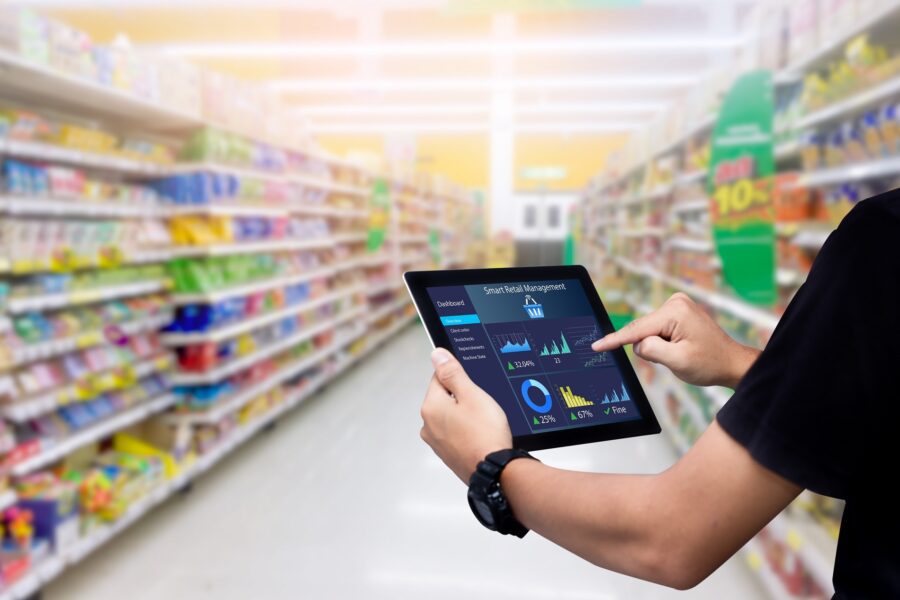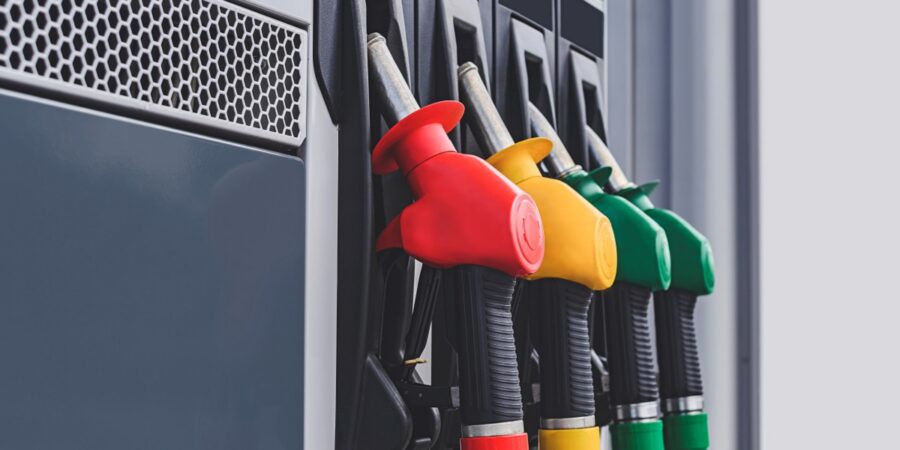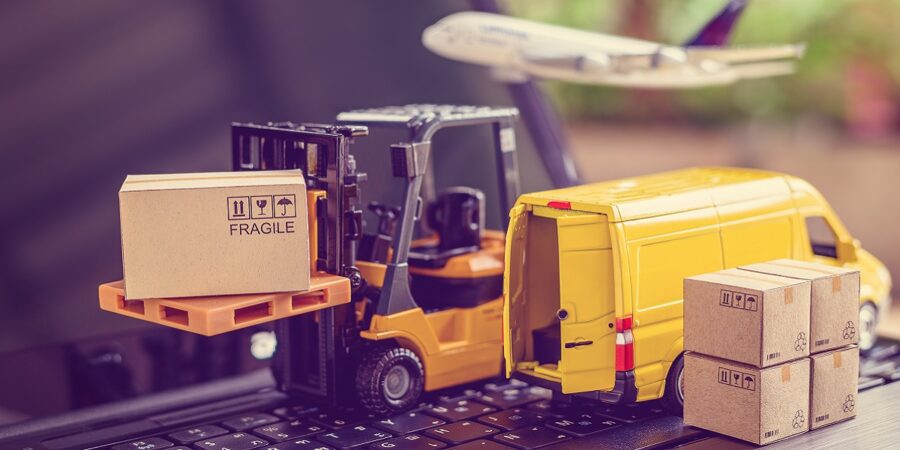Retail
What is a Retail Locker?
Written by: Parcel Pending
9 Min Read
Published: February 22, 2019
Updated: August 25, 2023
You may have heard of BOPIS retail lockers already. Retailer lockers have begun gaining increased traction, and while most people will have seen them in one or more retail stores and locations, they may not have a clear understanding of what they are, how they work, or what service they provide. Retail lockers are seeing increased use alongside the growth in retailers offering in-store pickup options for online shopping purchases. As the boundaries that separate the online and physical presences of popular retailers collapse, the use of retailer lockers as a means of streamlining and augmenting in-store pickup options will continue to rise.
In this article, we’ll break down what retail lockers are, how they are used, and what advantages they provide. Sometimes referred to as electronic parcel lockers, the use of lockers in a retail setting has risen steadily alongside services providing in-store pickup for purchases made online. In-store pickup services are themselves the result of trends affecting both online and brick-and-mortar retailers. We’ll break down these trends so that you can gain some perspective on the function of lockers in today’s retail environment.
Lockers themselves are, of course, nothing new. What is new is the integration of smart technology into locker systems that allow them to provide an important function for retailers. But retail isn’t the only area where lockers are being seen. Online retailers like Amazon have increasingly begun turning to electronic parcel lockers as a way to address rising rates of theft associated with parcel delivery.
While there are concrete advantages to parcel lockers for the customer themselves, there are also significant advantages to retailers of all shapes and sizes, regardless of industry. Among these are savings on last-mile shipping costs, which represent a substantial portion of overall shipping costs for shippers and carriers. Along with cost savings, the introduction of parcel lockers to augment in-store pickup options has streamlined the job of store associates, representing a savings of both labor and time for retailers that are constantly looking for ways to improve the efficiency of their retail operations and reduce overhead costs.
Retail Lockers Explained
You now have a good understanding of what a parcel locker is, but what’s a locker used for in a retail context? Retail lockers are a storage medium used to facilitate the transfer of orders placed online that are meant to be picked up in a physical retail location. Put another way, retail lockers are used to augment the buy online, pick up in store (BOPIS) service that many retailers are providing. Rather than have the customer pick up an order through a customer service associate, as occurs with a standard BOPIS order, retail parcel lockers are used as the final vehicle through which orders are retrieved by the customer. To understand exactly how retail lockers differ from a BOPIS order, let’s break down exactly how a BOPIS order works, and then we’ll take a look at how a retail locker changes this process.
BOPIS Orders
To understand the role of a retail package locker, let’s examine how in-store pickup works for online orders. In-store pick-up is also known as BOPIS, an acronym that refers to any purchase that is bought online and picked up in a retail store. BOPIS orders are increasing in popularity every year and for good reason. They capitalize on consumer demand for fast, free shipping options. While their core value to consumers is convenience, orders that utilize the BOPIS model are also inherently more secure.
As the number of online orders increases every year, so does the number of packages being left on doorsteps and stoops around the country. The result is an ever-increasing rate of packages that are being stolen before the recipient can retrieve their package. Local police are addressing this problem by heightening community awareness about suspicious activity, and homeowners are steadily increasing the number of outward-facing home security cameras to catch criminals in the act. Still, the problem remains. One way that both retailers and consumers are addressing this is by finding alternative routes to retrieve their packages.
Let’s first take a look at how in-store purchases work for the customer. First, understand that we are talking about retailers that have an online and retail presence. The customer goes to the online storefront and selects the products they want to purchase. Generally, if they select in-store pickup they’ll first have to select a nearby retail location that it will be picked up from. This populates the inventory at that specific location. Once everything the customer wants to purchase has been added to their cart, they proceed through the checkout and select in-store pickup as their shipping option. The order is then processed as normal. Once the order has been assembled, the customer is notified and they can go pick up their order. With a typical BOPIS order, the customer will retrieve their purchases at the customer service desk.
Now, let’s look at that same purchase from a store associate’s perspective. Once an order is placed online, a notification comes through to a store associate tasked with retrieving and assembling orders made online. The associate goes to the shelves to retrieve the items included in the order, provided those items aren’t being shipped from other stores or a distribution center. Once all items have been retrieved and combined, the customer is notified that their order is ready for pickup. When the customer arrives to pick up their order, the store associate verifies that they are indeed the correct customer and hands over the order.
What’s Different About Lockers?
A retail locker changes how BOPIS orders are fulfilled in important ways. Before we dive into the advantages of lockers for retail environments, let’s look at how the same purchase we discussed changes with the introduction of a secure locker. From the customer’s perspective, they place an order online and choose in-store pickup. Once their order has been retrieved and processed, they receive a notification that their order is ready for pickup. With this notification are retrieval instructions. When they arrive at the store, they go directly to the parcel lockers and either scan a barcode included in their order notification or enter the order number. Once verification is complete, the locker containing the order opens and the customer retrieves their package. That’s it. At that point, the customer can continue shopping or exit the store.
For the store associates, the introduction of lockers simplifies the entire order processing endeavor. Once they receive the order and assemble it, the store associate then logs that order into the electronic parcel locker. At that point, the store associate’s job is complete. The locker automatically notifies the customer that their order is ready for pick-up, and handles the verification process once the customer arrives to pick up their order.
Advantages of Retail Lockers
Now that we have an understanding of how retail lockers function within a scenario where an online order is picked up in a store, it is worthwhile taking some time to understand what advantages retail lockers provide. This information is useful for retailers that are seeking to determine whether electronic parcel lockers are advantageous for their specific situation and industry. Gaining a better understanding of the advantages that retail lockers provide can help businesses make better informed operational decisions. With that being said, let’s dive in.
More Convenient
The fact is, retail lockers are more convenient than a standard BOPIS interaction. While there are many BOPIS benefits, the reality is that often this convenience isn’t fully realized. While the customer may get their order slightly faster than if the order had been shipped to their residence directly, they will almost certainly have to wait in line to pick up their order. One of the reasons that many people place an order online to be picked up in-store is to avoid lines in the first place. Yet, despite this fact, most BOPIS orders must be retrieved at the customer service desk, which entails standing in line alongside others that are returning or exchanging items.
By utilizing an electronic parcel locker as the final vehicle for delivery, retailers are able to make the process much more convenient for their customers. With a parcel locker, customers are able to bypass any line and retrieve their orders quickly and efficiently. The process takes seconds instead of minutes, even during busy store hours. This allows customers to take full advantage of the convenience that BOPIS offers and enables customers to pick up orders quickly on their way home after work or on their lunch break. Additionally, for customers that are specifically seeking to avoid interacting with store associates, buy online pickup in locker (BOPIL) service allows them to avoid customer service interactions entirely.
More Efficient
The use of lockers to facilitate the transfer of orders to customers is inherently more efficient than the standard BOPIS process. With a standard in-store pickup service, one or more store associates must be involved in every step of the process. This is true from the moment an order is placed to the moment the customer leaves the retail location holding their order. This represents a significant investment in labor and generally requires store associates that are tasked solely with handling BOPIS orders.
The use of a smart locker system automates the most significant and time-consuming portions of an order. Retail lockers limit the store associate’s actions to the physical retrieval of the order and entering the order into the smart locker system. Once the order has been entered, the process is entirely automated. This frees up store associates for other tasks, streamlining the process significantly. The result is reduced labor costs associated with processing online orders that are picked up in-store. With staff freed up from notifying and handing off orders to customers, order retrieval will be faster, further improving the convenience of this model.
More Flexible
One thing we haven’t touched on yet is the flexibility that lockers offer retailers. When we think of lockers we tend to think of a regular, metal container. Today’s smart lockers are far from this and are capable of catering to a variety of industries. One example of this is the use of refrigerated lockers to facilitate in-store pickup for grocery orders which will be the future of grocery retail. The use of refrigerated parcel locker systems isn’t limited simply to the grocery industry. Rather, any industry that demands a temperature-controlled environment for their products, such as the floral industry, can utilize refrigerated lockers. So, what are refrigerated lockers? Read our related article to learn more.
Final Thoughts
The use of in-store pickup for online purchases isn’t going anywhere. Over the 2018 holiday season, BOPIS orders rose nearly 20% across retailers. This is up from the previous year’s holiday season and is expected to rise in the coming years. Given this, there is clearly demand from consumers for services that offer rapid order fulfillment and secure methods of order retrieval.
One of the challenges that many retailers have faced in meeting this demand is how to adapt their current operations to meet consumer expectations for convenience, without impacting their current customer service interactions in-store. Although the popularity of BOPIS orders has been steadily rising, it hasn’t been without growing pains. Customers can quickly become frustrated when they are forced to wait in a line to retrieve their online order.
One way to address this issue is through the use of retail lockers. Retail lockers are used to handle the final leg of fulfillment for orders that are made online and picked up in-store. Electronic parcel lockers offer advantages for both the customer and the retailer. Retail lockers truly deliver convenience to customers by creating a frictionless shopping and customer experience. At the same time, an electronic locker enables retailers to streamline the order fulfillment and delivery process, which helps reduce labor costs and overhead associated with order fulfillment. Read more about BOPIS vs BOPIL in our related blog article. To explore some of the ways that retail lockers can help augment your in-store pickup offerings, please contact Parcel Pending today.



